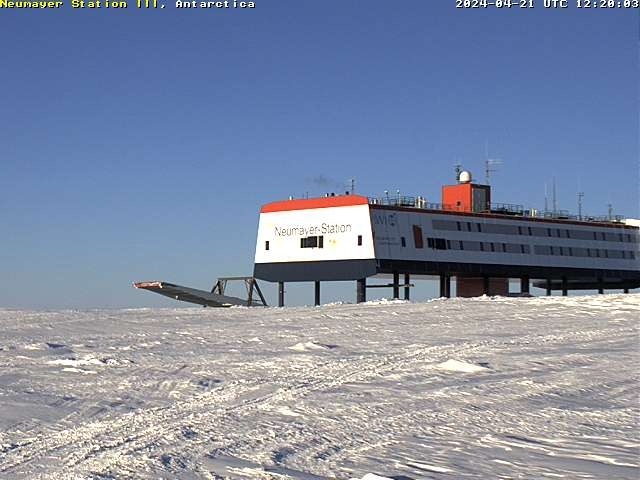
Neumayer Station III via WSPR
On occasion I’ll run my WSPR beacon on 40, 20, and 10 meters for a few days. The beacon is a QRP Labs kit and covers many of the HF bands.
I have it connected to an MFJ-2012 OCFD about 60 feet up between two trees outdoors. This antenna is resonant on 40, 20 and 10 with a near 1:1 SWR on the digital portions of these bands without a tuner.
Even though the WSPR beacon can band hop, I do not have a tuner which can auto tune at the low power output level that the beacon transmits (about 400mw on 40 meters and 200mw on 20 and 10 meters). And since the beacon cannot really handle a high SWR, I keep it band hopping on just these 3 bands that I do not need a tuner for.
Band Hopping
The term “band hopping” might need a bit of explanation. This refers to the ability for either a transmitter or receiver (or both) to be able to switch bands, either on a scheduled rotation or on demand. For example, running a WSPR beacon on just a single band is useful when that band is “open” for propagation. However, if that band is currently closed, then there might be other bands “open”, requiring the operator to switch bands.
If the transmitter (in this case a WSPR beacon) can automatically switch bands, then multiple bands can be covered automatically. If my antenna was resonant on 3 HF bands, I can automatically beacon on all 3 with a standard rotation.
Many WSPR beacons have settings for band hopping, or a controlled way to rotate between each of the bands selected or enabled. This limits the bands it will transmit on, such as avoiding non resonant bands based on the currently connected antenna.
WSPR as an Indicator of Open Bands
Sending a WSPR beacon out on multiple bands gives a good indication as to which bands are open and in which directions based on the currently connected antenna. It also can indicate when each is open, in terms of time of day, on average.
This is why running it on as many of the HF bands as I can is preferred.
Interesting WSPR Spots
On occasion I will view the stations that spotted my beacon. I often see the same stations each time, and I look for new spots and sometimes see some interesting ones.
I have often received a report from DP0GVN, a club station located at the German Antarctic Research Station “Neumayer III” in Dronning Maud Land, Antarctica.

Their QRZ page includes information about the station as well as Live Photos of the station.



The station is 8,353 miles away from my antenna and reports a -23db signal from my beacon. That is near the low end of signal strength for a WSPR decode but not too bad considering I am putting out about 400mw of power on 40 meters.
I was curious as to what times of day this contact is possible. I used WSPRNet to look back at historical logs for my station (N1UGK) to the research station (DP0GVN):

According to the log, it appears that contact was possible just after midnight EST on 40 meters, and continues through at least 9 AM EST.
It also appears that 20 meter contact occurred once near 9 PM EST.
Research Vessel “Polarstern”
Another interesting contact is with DPOPOL, a research vessel.
I have had reports from DPOPOL many times, and what I find interesting is the location each time is a bit different. It is interesting to see where this ship is with each contact.


I zoomed in a bit to view the spots from DP0POL within a 24 hour period and interestingly I can see where it had been.


Eureka Amateur Radio Club
Another interesting contact was with VY0ERC on 20-meters, which is located in Eureka, Canada.


Final Thoughts
WSPR offers not only a window into the currently open RF propagation paths, it can offer some interesting reports from stations in unusual or uncommon places.
It is interesting to review the spots received, looking for new locations from spotters. WSPR is a one way contact, much like “SWLing”, in this case I’m the “shortwave station” and the research outposts are sending out the QSL.
Setting up a WSPR beacon is not expensive, but it does require a good HF antenna, and I often run mine when not on the air on other modes.

I’ve never tried WSPR but I have a hi band QMX. Do you have any experience running WSPR without a dedicated GPS module?
Yes, you can run WSPR using WSJT-X or similar using the QMX. In the software configuration of WSJT-X you specify your grid square just the same as for FT8, no GPS is really needed unless your location is changing, such as a vessel, balloon, etc. GPS can be useful for the heartbeat allowing for fine tuning of the oscillator for frequency accuracy.